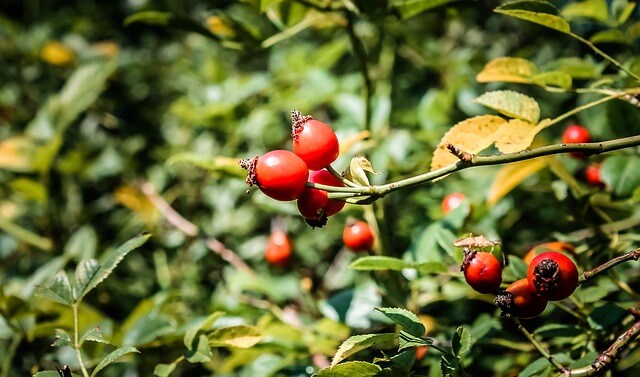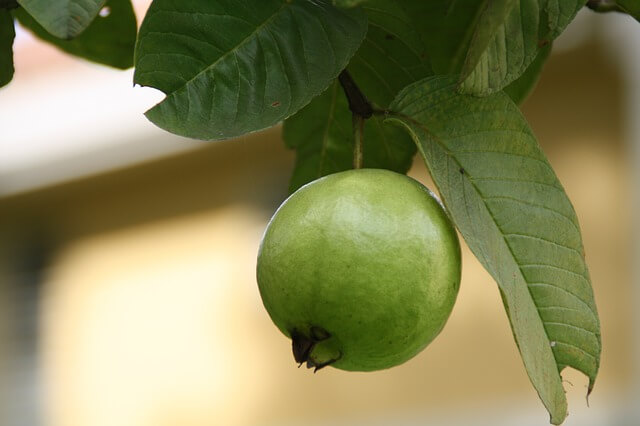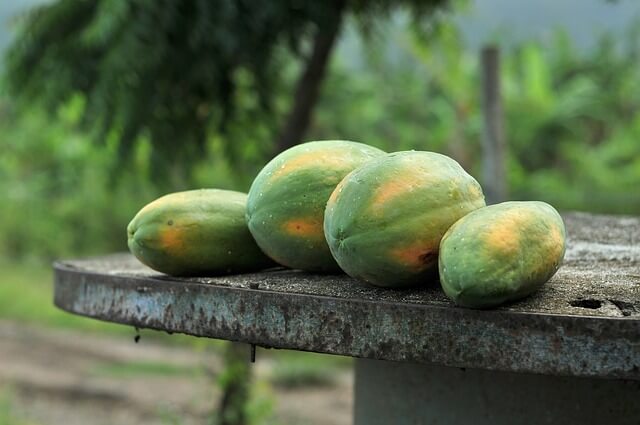Vitamin C is a water-soluble vitamin found in many foods. The richest sources of this vitamin are fruits and vegetables. This trace mineral is known to be a powerful antioxidant. It should be noted that its consumption has a positive effect on the quality of the skin, and also improves the work of the name system.
This element is also used by the body to synthesize collagen, as well as to strengthen connective tissue, bones, teeth, and small blood vessels.
The human body cannot produce or store vitamin C on its own, so it must be consumed regularly.
The average person’s daily requirement for vitamin C is 90 mg.
In the event of a deficiency of this element in the body, symptoms such as bleeding gums, frequent bruising and lowered immunity, and slow wound healing can be observed. A lack of this vitamin can cause serious diseases such as anemia and scurvy. To prevent the negative effects of vitamin C deficiency, consider vitamin c high foods.
Foods with vitamin c
Plum cockatoo
- The cockatoo plum, also known as Terminalia ferdinandiana, is an Australian fruit that contains 100 times more vitamin C than an orange. This fruit has the highest known concentration of vitamin C – up to 5300 mg per 100 grams of product. Consuming just one plum can replenish 5 to 30 percent of your daily requirement for vitamin C.
- In addition, the cockatoo plum contains potassium, vitamin E and lutein, which is an antioxidant. All of these elements are considered to be very beneficial for vision.
Acerola cherry
- Acerola cherry red, which has the scientific name Malpighia emarginata, is also rich in vitamin C. 49 grams of this product contains 822 mg of vitamin C, which is 913 percent of the daily value.
- Studies using an extract of this plant have shown that its consumption prevents the formation of cancerous tumors, as well as protects the skin from ultraviolet radiation and reduces the damage done to human DNA by inappropriate nutrition.
Rosehip berries

- Rosehip is a small, sweet, fruit produced by the blooming rose. It has a high vitamin C content.
- Consumption of 6 rose hips provides the body with 119 mg of vitamin C, which is 132 percent of the daily value. This product allows you to improve collagen synthesis, as well as the condition of the skin, despite the age of the person.
- As a result of research, it was found that vitamin C reduces the negative effects of ultraviolet radiation on the skin, eliminates wrinkles, dryness, discoloration and improves its appearance. Among other things, this trace mineral accelerates wound healing and eliminates inflammatory skin conditions such as dermatitis.
Chilli
- One green chili contains up to 109 mg of vitamin C, which is about 121 percent of the daily value. At the same time, the content of vitamin C in red pepper does not exceed 65 mg, which is only 72 percent of the daily value.
- It is important to note that chili peppers are high in capsaicin, which is responsible for the pungency. The capsaicin in the fetus can also be used to relieve pain and inflammation.
- Research by scientists has shown that consuming 10 grams of red chili powder can improve fat burning.
Guava

- Guava is a pink-colored tropical fruit native to Mexico and South America. One fruit of this plant contains up to 126 mg of vitamin C, which is approximately 140 percent of the daily value. This fruit is also high in lycopene, known for its antioxidant properties.
- A 6-week study in which 45 young and healthy people took part showed that eating 400 grams of guava per day can significantly reduce blood pressure and cholesterol levels.
Sweet yellow pepper
The vitamin C content of sweet yellow peppers can increase as the fruit ripens.
- 75 grams of this vegetable contains 137 mg of vitamin C, which is approximately 152 percent of the daily value. This figure is twice the vitamin C content of green peppers.
- Scientists have shown that the systematic consumption of the daily intake of vitamin C improves the functioning of the eyes, and also protects them from the development of cataracts.
- A study of over 300 women showed that the group that consumed more vitamin C had a 33 percent lower risk of developing cataracts compared to the group with a lower intake of this vitamin.
Black currant
- 56 grams of blackcurrant, which is about half a glass, contains 101 mg of vitamin C, which equates to 112 percent of the daily intake.
- The dark color of this berry is due to its high content of antioxidant flavonoids known as anthocyanins.
- The combination of micronutrients such as vitamin C and anthocyanins helps to reduce the level of oxidative damage that can be caused by chronic diseases, including heart disease, cancer and neurodegenerative diseases.
Thyme
- Fresh thyme, a culinary herb, contains three times more vitamin C than orange fruit. This herb has one of the highest concentrations of vitamin C of any spice used in cooking. 28 grams of fresh thyme contains 45 mg of vitamin C, which equates to half the daily value
- To strengthen the immune system, it is quite enough to add 1-2 tablespoons of fresh thyme to cooked dishes.
- Thyme is also known as one of the best remedies for sore throats and respiratory problems, as it boosts antibody production and also kills viruses and harmful bacteria.
Parsley
- 8 grams of fresh parsley, which is approximately equal to two tablespoons, contains up to 10 mg of vitamin C, which equates to 11 percent of the daily value. In addition, parsley is one of the richest sources of non-heme iron. The combination of these two trace elements in this plant helps prevent the development of iron deficiency anemia.
- Scientists conducted a study in which people on a vegetarian diet were given 500 mg of vitamin C twice a day at the same time as meals. At the end of the study, subjects’ blood levels increased by 17 percent, hemoglobin by 8 percent, and ferritin, which is a stored form of iron, by 12 percent.
Mustard spinach
- One cup of raw chopped mustard spinach can provide 195 mg of vitamin C, which is approximately 217 percent of the daily intake of this micronutrient.
- Despite the fact that during cooking during heat treatment, the content of vitamin C in many products decreases, mustard spinach retains its beneficial properties and the amount of beneficial trace elements.
- It is also worth noting that mustard spinach is rich in vitamin A, potassium, calcium, manganese, fiber, and folate.
Cabbage
- One cup of shredded raw cabbage contains up to 80 milligrams of vitamin C, or about 89 percent of the daily intake for this micronutrient. In addition, raw cabbage is high in vitamin K, carotenoids, lutein, and zeaxanthin.
- Despite the fact that the heat treatment of this vegetable reduces the vitamin C content, it allows you to increase the amount of antioxidants that prevent the development of chronic diseases and eliminate inflammation.
Kiwi
- A medium-sized kiwi fruit can contain up to 71 mg of vitamin C, or 79 percent of the daily value of this trace element. As a result of studies, it was found that the systematic consumption of kiwi fruits reduces the negative effects of stress, lowers blood cholesterol levels and improves the functioning of the immune system.
- Also, scientists conducted another study, which involved 30 people aged 20 to 51 years. His results showed that consuming 2–3 kiwi fruits daily for 28 days lowered platelet stickiness by 18 percent and lowered triglycerides by 15 percent. Based on this, the scientists concluded that the systematic consumption of kiwi can reduce the risk of blood clots and strokes.
- Another study of 14 men who were deficient in vitamin C found that eating two kiwifruit per day for a month increased white blood cell activity by 20 percent. At the same time, the level of vitamin C in the blood returned to normal in just 7 days.
Broccoli
- Broccoli is a vegetable that belongs to the cruciferous family. Half a cup of cooked broccoli contains 51 mg of vitamin C, which is 57 percent of the daily intake.
- Daily consumption of boiled broccoli helps to reduce the risk of cancer and cardiovascular disease.
- Scientists conducted a study in which 27 young men who are heavy smokers included 250 grams of steamed broccoli in their diet every day. After a week and a half, their C-reactive protein marker for inflammation had dropped 48 percent.
Brussels sprouts
- Half a glass of boiled Brussels sprouts contains up to 49 mg of vitamin C, which is 54 percent of the daily intake of this trace element. Like most cruciferous vegetables, Brussels sprouts are high in fiber, vitamin K, folate, vitamin A, manganese and potassium.
- Vitamins C and K are of great importance for strengthening bone tissue. In particular, vitamin C contributes to the formation of collagen, which is the fibrous component of the bone.
Lemon
- In the 18th century, workers on large sea vessels were given lemon fruit to prevent the development of scurvy. One whole, raw lemon, including its peel, contains up to 83 mg of vitamin C, which equates to 92 percent of the DV.
- It’s important to note that vitamin C in lemon juice also acts as an antioxidant.
- When fruit is cut, the polyphenol oxidase enzyme contained in the fruit is exposed to oxygen, which causes an oxidation process and makes their surface brown. Applying lemon juice to exposed surfaces helps prevent browning.
Lychee
- One lychee fruit contains about 7 mg of vitamin C, or 7.5 percent of the DV. At the same time, one cup of lychee can contain up to 151 percent of the daily value of vitamin C.
- Lychee fruits, among other things, contain omega-3 and omega-6 fatty acids, which are of great value for the functioning of the brain, heart muscle and blood vessels.
- A large study involving about 196,000 people found that those who consumed large amounts of vitamin C had a 42 percent reduction in stroke risk. However, each additional serving of fruits or vegetables high in vitamin C reduced the risk by an additional 17 percent.
American persimmon
- Persimmon is an orange-colored fruit with a shape that vaguely resembles a tomato. There are a huge number of varieties of this plant in the world. The most common of these is the Japanese persimmon. Most beneficial, however, is the American persimmon, also known as Diospyros virginiana, which contains nearly nine times more vitamin C than the Japanese variety.
- One American persimmon fruit contains 16.5 mg of vitamin C, which is 18 percent of the daily value.
Papaya

- 145 grams of papaya contains 87 mg of vitamin C, or 97 percent of the daily intake of this micronutrient. The consumption of the fruits of this plant improves memory and also prevents the development of inflammatory processes in the human brain.
- As part of the study, 20 subjects with mild Alzheimer’s disease were given concentrated papaya extract for six months. The results showed a 40 percent improvement in participants’ health.
Strawberry
- One cup of strawberries, which contains 152 grams of pure product, can provide the human body with 89 mg of vitamin C, or replenish 99 percent of the daily value of this trace element.
- Strawberries contain many different micronutrients such as manganese, flavonoids, folate, and a number of beneficial antioxidants.
- Research has shown that the antioxidants in strawberries can help prevent cancer, diabetes, dementia, and heart disease.
Orange
- One medium-sized orange contains up to 70 mg of vitamin C, which is 78 percent of the daily value.
- Other citrus fruits can also replenish the body’s supply of vitamin C. So, half of a grapefruit contains 44 mg of vitamin C, or 73 percent of the daily intake of this trace element, in tangerine – 24 mg, in lime juice – 13 mg.
Summary
- Vitamin C is of great importance for the human body, as it improves the functioning of the immune system, strengthens connective tissues, ensures normal heart function, improves vascular health, and is also used by the body to maintain a number of important functions. Lack of this trace element can negatively affect health.
- Although citrus fruits are the most famous source of vitamin C, this trace mineral is found in a huge number of fruits and vegetables. Moreover, some vegetables contain several times the vitamin C concentration of citrus fruits.
- By consuming the fruits and vegetables mentioned above daily, you can fully satisfy the body’s need for vitamin C. Eating a diet rich in vitamin C is the first and most important step towards a healthy lifestyle, as well as the best way to prevent diseases.
